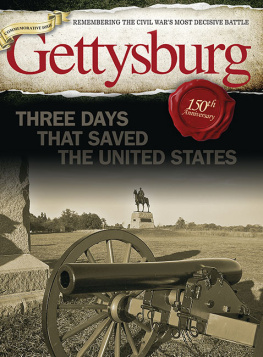Ben Nussbaum - Travel Adventures: Yellowstone: Volume
Here you can read online Ben Nussbaum - Travel Adventures: Yellowstone: Volume full text of the book (entire story) in english for free. Download pdf and epub, get meaning, cover and reviews about this ebook. year: 2018, publisher: Triangle Interactive, LLC, genre: Children. Description of the work, (preface) as well as reviews are available. Best literature library LitArk.com created for fans of good reading and offers a wide selection of genres:
Romance novel
Science fiction
Adventure
Detective
Science
History
Home and family
Prose
Art
Politics
Computer
Non-fiction
Religion
Business
Children
Humor
Choose a favorite category and find really read worthwhile books. Enjoy immersion in the world of imagination, feel the emotions of the characters or learn something new for yourself, make an fascinating discovery.
- Book:Travel Adventures: Yellowstone: Volume
- Author:
- Publisher:Triangle Interactive, LLC
- Genre:
- Year:2018
- Rating:5 / 5
- Favourites:Add to favourites
- Your mark:
- 100
- 1
- 2
- 3
- 4
- 5
Travel Adventures: Yellowstone: Volume: summary, description and annotation
We offer to read an annotation, description, summary or preface (depends on what the author of the book "Travel Adventures: Yellowstone: Volume" wrote himself). If you haven't found the necessary information about the book — write in the comments, we will try to find it.
Travel Adventures: Yellowstone: Volume — read online for free the complete book (whole text) full work
Below is the text of the book, divided by pages. System saving the place of the last page read, allows you to conveniently read the book "Travel Adventures: Yellowstone: Volume" online for free, without having to search again every time where you left off. Put a bookmark, and you can go to the page where you finished reading at any time.
Font size:
Interval:
Bookmark:
0covercover.xhtmlTravel Adventures YELLOWSTONE Volume Ben Nussbaumcover1page0001page0001.xhtml22page0002page0002.xhtmlVolume33page0003page0003.xhtml44page0004page0004.xhtmlTable of Contents An Enchanted Land 4 A Real Hot Spot 6 Amazing Animals 10 Wonderful Waterfalls 18 A Year at Yellowstone 22 Always Enchanting 26 Problem Solving 28 Glossary 30 Index 31 Answer Key 3255page0005page0005.xhtmlAn Enchanted Land There's a place in America that is still wild. Bears, wolves, and cougars live free. Bison graze in mountain meadows. Moose and elk do, too. Eagles and falcons soar in the sky. It's a land of waterfalls and snow-covered peaks. Yellowstone National Park is filled with many beautiful sights. But, Yellowstone is also a bizarre and dangerous place. Underground heat melts roads. The ground shakes with earthquakes. Geysers shoot into the air. Yellowstone is full of contradictions. It's wild, but it is also carefully under control. It's peaceful, but that peace can be shattered at any minute. American Indians lived there first. It wasn't long until white settlers found the land. One of the first non-Indians to see Yellowstone was a prospector named John C. Davis. In 1864, he wrote that his group was stunned by "the wonders of this enchanted land. " He added, "We hardly knew what to think. " Today, millions of people visit Yellowstone each year. People come from all over the world to see the wonders that Davis wrote about. Bison graze by a river.66page0006page0006.xhtmlA geyser shoots water and steam into the air at Yellowstone National Park. LET'S EXPLORE MATH Visitors to Yellowstone often use horses, mules, or llamas to carry their gear. These animals can carry pack boxes on their backs. Suppose a pack box in the shape of a rectangular prism has a length of 30 inches, width of 15 inches, and height of 20 inches. Which of the following best describes the volume of the pack box? Describe your reasoning. A. 9, 000 B. 9, 000 inches C. 9, 000 square inches D. 9, 000 cubic inches77page0007page0007.xhtmlA Real Hot Spot A volcano isn't visible when tourists visit Yellowstone. That's because all of Yellowstone is a supervolcano, right underfoot. It gurgles and burps. It gently shakes the ground. The park is located on a plateau about 8, 000 feet (2, 438 meters) above sea level. Magma pushes through cracks in the volcano. When rainwater falls in Yellowstone, it seeps through the surface and meets the heat beneath. Hot springs are created when this hot water flows back up to the surface. Yellowstone hot springs88page0008page0008.xhtmlThe water slowly cools toward the edge of the hot spring. Tiny organisms live in this unique environment. They are called thermophiles. That means "heat lovers" in Greek. Different thermophiles prefer different water temperatures. The colored rings of a hot spring indicate the type of thermophiles that live in that water. Park visitors marvel at the beautiful colors that result. The Grand Prismatic Spring is one of these hot springs. It's Yellowstone's largest. It's as long as two football fields and over 100 ft. (30 m) deep. thermophile LET'S EXPLORE MATH Thermophiles can form layers which appear solid. These are called mats. Suppose scientists take a sample from a mat to study. They draw the sample to record its size. Each cubic unit stands for 1 cubic centimeter. Use the drawing to answer the questions. 1. How many layers are in the sample? 2. How many cubic centimeters are in one layer? 3. How many cubic centimeters are in the sample?99page0009page0009.xhtmlA rainbow forms over Old Faithful. OLD FAITHFUL GEYSER1010page0010page0010.xhtmlGeysers are a type of hot spring. They form when water is heated underground. However, that water can't make it to the surface. The water becomes very hot. As the temperature increases, so does the pressure. When the pressure is too great, water bursts through the surface and into the sky. Yellowstone has more than 300 geysers. That is more than half of the world's total geysers! Old Faithful is one of the park's most famous geysers. It erupts about 17 times each day. It can shoot water as high as 180 ft. (55 m). Steamboat is a geyser that does not erupt on a predictable schedule. But, when it does, it can blast water 300 ft. (91 m) into the sky. Castle shoots water out of a large cone. Some people think it looks like the ruins of an ancient fortress. Its blasts can last 20 minutes and are followed by 30 to 40 minutes of steam. Comet has a very small eruption, but it erupts almost constantly. All of these geysers can create rainbows on sunny days when light passes through their mist. geyser cone1111page0011page0011.xhtmlAmazing Animals Yellowstone is home to lots of animals, such as bison, black bears, and wolves. In fact, there are 67 types of mammals in the park! Yellowstone has the largest concentration of mammals in the continental United States. Lynx, bobcats, and cougars are some of the fierce predators that live there. Many of them have made Yellowstone their home because there is a lot of small prey to eat. These giant cats compete with wolves and bears for food, but they are rarely seen by visitors. Mammals aren't the park's only creatures. Cutthroat trout and other fish fill Yellowstone's streams. Lizards warm themselves in the sun. Frogs croak the days away in the ponds. About 150 species of birds nest in the park. The trumpeter swan was almost extinct a generation ago. The park gave it a safe home. Now, the species is rebounding. Bald eagles nest near water. Ospreys (AH-sprays) dive to catch fish. Many of Yellowstone's creatures move in and out of the park. Luckily, much of the wilderness around Yellowstone is also protected. The park and the surrounding areas are known as the Greater Yellowstone Ecosystem. bobcat trumpeter swan1212page0012page0012.xhtmlAmerican bald eagle grizzly bear1313page0013page0013.xhtmlBison Yellowstone is home to about 5, 000 bison. Park visitors often see them. The large beasts spend a lot of time in open meadows where they can find grass to eat. In some places, roads run right next to where they graze. Groups of bison often block traffic. They are not afraid of humans. Bison may seem tame, but people must remember that they are wild animals. Bison are not normally aggressive, but they will protect themselves. Some bison have attacked people who try to take photos with them. This is not something to take lightly. Male bison can weigh about 2, 000 pounds (907 kilograms). They can run faster than an elite sprinter. They can even jump up to 6 ft. (2 m) in the air. It's best to always give wild animals some space. In the late 1800s, bison were almost extinct. The herd in the park helped the species survive. Now, the park often has too many bison. Each year, some of the animals are given to American Indian tribes whose ancestors once hunted bison. The people use the bison meat and hides for food, clothing, and other needs. DANGER DO NOT APPROACH WILDLIFE1414page0014page0014.xhtmla bison and her calf herd of bison LET'S EXPLORE MATH If bison seem sick, rangers put them in pens as a form of quarantine. They feed the bison hay. Imagine that the hay bale is in the shape of a rectangular prism. Each cubic unit in the drawing stands for 1 cubic meter. Use the drawing to complete the sentence frames. There are _______ layers of _______ cubic meters. The hay bale has a volume of _______ cubic meters.1515page0015page0015.xhtmlA bear explores a park dumpster. A grizzly bear and her three cubs walk through the park in search of food.1616page0016page0016.xhtmlBears Imagine driving through Yellowstone. You see a bear by the side of the road. Your parent stops the car to get a closer look. Before you can blink, the bear sticks its nose through your car window. The bear is looking for your picnic lunch. It's hard to believe, but interactions between humans and bears used to be common. Many bears and people were injured as a result of this close proximity. Times have changed. Park rangers do not want bears to develop a taste for human food, so people are not allowed to feed them. The park has strict rules to keep people and bears from getting too close to each other. Trash is locked away so bears can't see it. People must also stay at least 100 yards (91 meters) away from bears. The park is home to black bears and grizzly bears. Black bears weigh about as much as a grown man. Grizzly bears are bigger. They weigh up to 700 lb. (318 kg)! In 1975, about 130 grizzlies lived in the park. Keeping bears and humans from interacting has helped the population increase. Today, about 700 grizzly bears live there. BE BEAR AWARE FOOD STORAGE REQUIRED1717page0017page0017.xhtmlWolves Like grizzly bears, the number of wolves in the park has also increased. Their howls are a special part of the Yellowstone experience. In 1995 and 1996, 31 gray wolves were relocated from Canada to Yellowstone. People were not sure whether the wolves would leave the park to eat nearby cattle and sheep. No one knew how the wolves would affect other animal species or the ecosystem in the park. Now, there are about 100 wolves in Yellowstone. The wolves' presence has helped the park in lots of ways. They have moved elk and deer away from valleys, where they were easy prey for larger animals. Because the elk have moved, trees now grow in those areas. The trees are no longer eaten by the elk. Wolves hunt and kill coyotes. Fewer coyotes in the park helps animals that are their prey. Foxes also benefit, since they eat the same prey as coyotes. Foxes no longer have to compete for food. small pack of gray wolves1818page0018page0018.xhtmlelk coyote Wolves howl to signal their pack.1919page0019page0019.xhtmlLower Falls Wonderful Waterfalls If you like waterfalls, Yellowstone is a great place to visit. The park boasts about 350 waterfalls that are at least 15 ft. (5 m) tall. There are also countless smaller waterfalls called cascades in the park.2020page0020page0020.xhtmlTwo of the most spectacular falls are a short walk from each other. The Upper Falls and the Lower Falls are both on the Yellowstone River. They are easy to get to by road. The Upper Falls drops 100 ft. (30 m) in a burst of white foam. The Lower Falls drops more than 300 ft. (91 m). Many visitors notice the green stripe in the Lower Falls. This is caused by a lip in the rock behind the water. The lip of a waterfall is the area where the water "bends. " The water is deeper in this area. This keeps the water from foaming with the air because of the angle of the lip. This is why the deeper part of the water looks green. The Grand Canyon of Yellowstone is about 20 mi (32 km) long from the Upper Falls to the Tower Falls area. This narrow canyon is one of the park's most stunning sights. Iron and sulfur in the rock give the canyon a rust color. People can hike a trail into the canyon for a close-up view of the falls. LET'S EXPLORE MATH In 1871, the U.S. government sent an expedition to Yellowstone. An artist named Thomas Moran created paintings to show Congress why Yellowstone was so special and should be protected. Imagine that one of his large paintings needs to be restored. It will travel in a 40 cubic meter box to a museum. In the drawings, each cubic unit stands for 1 cubic meter. Which box has a volume of 40 cubic meters?2121page0021page0021.xhtmlA favorite hiking destination is the remote Cascade Corner. This area gets the most precipitation in the park. Its landscape includes lots of steep drops. Those drops create amazing waterfalls! Terraced Falls is actually a set of six waterfalls in a row. The Falls River descends more than 140 ft. (43 m) to make this waterfall. Terraced Falls is only 2 mi. (3 km) from the road, which makes it an easy trek for hikers. Union Falls, though, is more than 10 mi. (16 km) away from the nearest road. Yet it is one of the highlights of Cascade Corner. Two streams flow over cliffs right next to each other. This is how the waterfall was named-the two streams come together as one to fall 250 ft. (76 km). This results in a very unique waterfall. Morning Falls is a 60-ft. (18-m) waterfall in Yellowstone. It is 100 ft. (30 m) wide. As its name suggests, it's best to see it in the morning. It faces the east and sparkles as the early sun rises. People who want to visit this waterfall should beware. The waterfall is not maintained by park staff. Morning Falls is so remote that rangers didn't know about it until 1969! Upper Falls2222page0022page0022.xhtmlUnion Falls LET'S EXPLORE MATH Scientists estimate that during spring, water flows at about 8 cubic meters per second over the waterfalls. Draw three different rectangular prisms that could hold this amount of water. Have each cubic unit in your drawing represent 1 cubic meter.2323page0023page0023.xhtmlA Year at Yellowstone In Yellowstone, snow typically starts to fall in October. Most of the roads are closed by November because of the heavy snowfall. Despite the snowy weather, the park stays open in winter. Many visitors like to see the sights covered in snow. However, visitors might have to ride a snowmobile to see Old Faithful! Many animals stay hidden during winter. They hibernate or bury themselves in burrows under the snow. Foxes and coyotes stay active during the winter. They must continue to search for food. Predators listen for small animals, such as mice, that hide under the snow. When they hear their prey, it's time to attack! Foxes pounce headfirst into the snow to find their prey. Coyotes dig with their front paws to get their meal. An American red fox finds a meal.2424page0024page0024.xhtmlDuring winter, wolves follow elk and bison into the valleys to hunt for food. Wolf packs compete for available food. Bison break into small herds of about 20. They grow thick winter coats that help them stay warm. Bison use their huge heads and strong shoulders to dig through the snow. Other animals often follow behind the bison, using them as snowplows. This bison's thick fur keeps it warm in the snow. LET'S EXPLORE MATH Park roads at Yellowstone close each spring. Clean-up crews use snowplows to remove the winter's snow from the roads. The snow is placed in piles along the sides of the roads. 1. Imagine that one of the snow piles has a length of 9 meters, width of 5 meters, and height of 5 meters. Draw a model of this snow pile. Have each cubic unit in your drawing represent 1 cubic meter. 2. What is the volume of the snow pile?2525page0025page0025.xhtmlBy spring, Yellowstone is full of life again. In March, adult male bears leave their dens. In April, females emerge with cubs that were born during the winter. The bears feast on winterkill. The large animals that died during the winter stay frozen until spring, and they make a perfect meal. Bison calves are born late April into May. After a couple days, they join the herd. Wolf pups are born in April. April is an important month for wolves and bison, too. The wolves and pups abandon their dens by the time the pups are 8 to 10 weeks old. A grizzly bear feeds on winterkill. a wolf and her pups2626page0026page0026.xhtmlSoon, the park is crowded with visitors who enjoy the warm summer weather. But, by September, temperatures often drop below freezing. Marmot, a species of ground squirrels, hibernate soon after temperatures dip. Often, male elk battle over mates. They begin to rut, or mate, in October. The males bugle, or make a loud series of noises. This attracts females. It can also be used to warn other males. The fall season at Yellowstone brings its own changes. In Yellowstone's valleys, the ground cover turns yellow and gives the park a golden hue. Soon, Yellowstone's long winter will return. An elk bugles during the rut.2727page0027page0027.xhtmlAlways Enchanting Yellowstone was made a national park in 1872. The U.S. National Park service helped protect the park. They started to teach people about the wildlife. They raised money to protect the park and to get the public involved. But, more needed to be done. People poached animals. They cut down trees. In 1886, the U.S. Army entered Yellowstone to guard it. Park rangers took over in 1918. The park's borders changed in 1929. The new borders followed natural land features more closely. In 1932, 7, 000 more acres were added to the northern border. The changes have not stopped. Plans and laws are revised each year to better protect the park. 1872 border 1932 border Members of the U.S. Army stand in front of the West Thumb Soldier Station in Yellowstone, ready to protect the park. YELLOWSTONE NATIONAL PARK2828page0028page0028.xhtmlNatural events shape the land and bring changes to Yellowstone. An earthquake in 1998 changed Old Faithful. It made its eruptions longer. People shape the park, too. More than three million people visit the park each year. Some people at the park cause vandalism, pollution, damage, and overuse. Most of all, the park changes because it is alive. Wolf packs battle for supremacy. Beaver dams change the flow of streams. It is impossible to count all the ways the park changes! But, one thing that John C. Davis noticed in 1864 remains the same : Yellowstone is an enchanted place! A Yellowstone park ranger gets a close look at a giant geyser in the 1880s.2929page0029page0029.xhtmlProblem Solving Bears have big appetites. Plus, they consider anything with a scent to be food-including garbage! That is why it is important for the dumpsters at Yellowstone to be bear-proof. This is necessary to keep bears and people safe. Imagine that you are one of the rangers choosing new dumpsters for different areas of the park. Three companies submit different specifications for their dumpsters. All of the dumpsters are shaped like rectangular prisms. Use the details to answer the questions and make the best choices. 1. Calculate the missing specifications for each dumpster. 2. The dumpster with the least volume will be installed at each campsite. Which dumpster do you recommend and why? 3. Picnic areas require dumpsters with twice the volume of the campsite dumpsters. Which dumpster is the best choice for the picnic areas and why? 4. The dumpster behind the visitor's center needs to have the greatest volume. a. Which dumpster is best for the visitor's center? b. How many times greater is the volume of the dumpster behind the visitor's center than the volume of the campsite dumpster? How do you know? USE CLIP SAVE A BEAR3030page0030page0030.xhtml
Next pageFont size:
Interval:
Bookmark:
Similar books «Travel Adventures: Yellowstone: Volume»
Look at similar books to Travel Adventures: Yellowstone: Volume. We have selected literature similar in name and meaning in the hope of providing readers with more options to find new, interesting, not yet read works.
Discussion, reviews of the book Travel Adventures: Yellowstone: Volume and just readers' own opinions. Leave your comments, write what you think about the work, its meaning or the main characters. Specify what exactly you liked and what you didn't like, and why you think so.



















